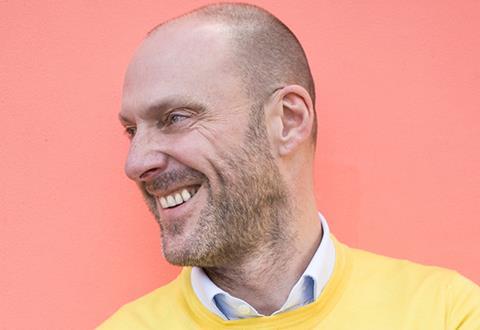If you don’t want sterility be prepared to get messy, writes Martyn Evans

My friend Patricia Brown told me a story last week about the new wooden gardening trug her five-year-old nephew gave her for her birthday. “Don’t worry Aunty Pat,” he said. “It’ll soon dirty up.”
She told the story because we were looking at pictures of the Liverpool Waters scheme, designed by Chapman Taylor, and discussing the threat from Unesco to delist the city’s historic waterfront as a World Heritage Site. A cursory flick through the CGIs provided by a Google search didn’t elicit a very favourable response from the table. My first instinct was to ask where all the trees were and as we continued to discuss the developers’ proposals, we all agreed that, of course, you can’t tell anything from a CGI.
Our conversation moved on to the Design District on the Greenwich Peninsula, which one of our fellow diners had been to wander around that day. He worried that it might end up being a triumph of overdesign, a collection of buildings all designed to be different just for the sake of it with little thought for the experience of the people who will populate and use it every day.

My thoughts about this conversation were coloured by one more thing that I had seen that week – the film that’s on Netflix about Jane Jacobs: Citizen Jane, Battle for the City. This wonderful film tells the story of Jane’s life in protest and focuses on her (ultimately successful) battle to scupper Robert Moses’ plans to build a cross-Manhattan expressway, destroying in the process her beloved Greenwich Village.
Jane’s mantra, “eyes on the street”, and her visceral belief that successful places are about the people who populate them and not the buildings that frame them provided, for me, a way to look at both these schemes – one nearly finished, and one still a set of drawn proposals.
Of course, the architecture and the masterplanning must be good but it’s what happens then that really matters. How are the buildings going to be used? Who is going to live and work in them? And how much control and licence are the occupiers to be given to create the kind of successful places they need?
So much of property development stops at the point at which the buildings are finished. I have written before about the cookie-cutter, dull places that an obsession with covenant strength delivers when tenanting commercial property – particularly ground-level activation of larger residential-driven schemes. Almost always an afterthought to the main event, these commercial spaces are paid way too little attention but are often the most crucial contributor to making a good, community-driven, safe, inspiring place.
For me it’s like messing up your hair in the mirror after it’s been carefully styled by the professional in the salon (not me, by the way – see pic above). It’s about adding your own personality to something someone else has created. And that’s what I think should happen on the ground in these large masterplanned schemes. And that takes creative thought and a conspiracy between developers, funders and their agents.
>> Also read: The secret behind a chain-free high street
Ask anyone who knows and loves a local neighbourhood why they love it so and they’ll mention the guy who’s had the fruit and veg shop for years and the bakery that makes the good bread. Look at the local shops that get photographed for Instagram for their charm – it’s never going to be a Costa Coffee, is it?
Masterplanning a whole new area of a city is about trying to make it look like it’s always been there. And you can’t do that from a spreadsheet. It’s a complex job that needs to involve those who know the area intimately in a partnership with those who have the commercial responsibility to make those places work.
And then it’s about just letting it be.
Postscript
Martyn Evans is creative director of U&I
















1 Readers' comment